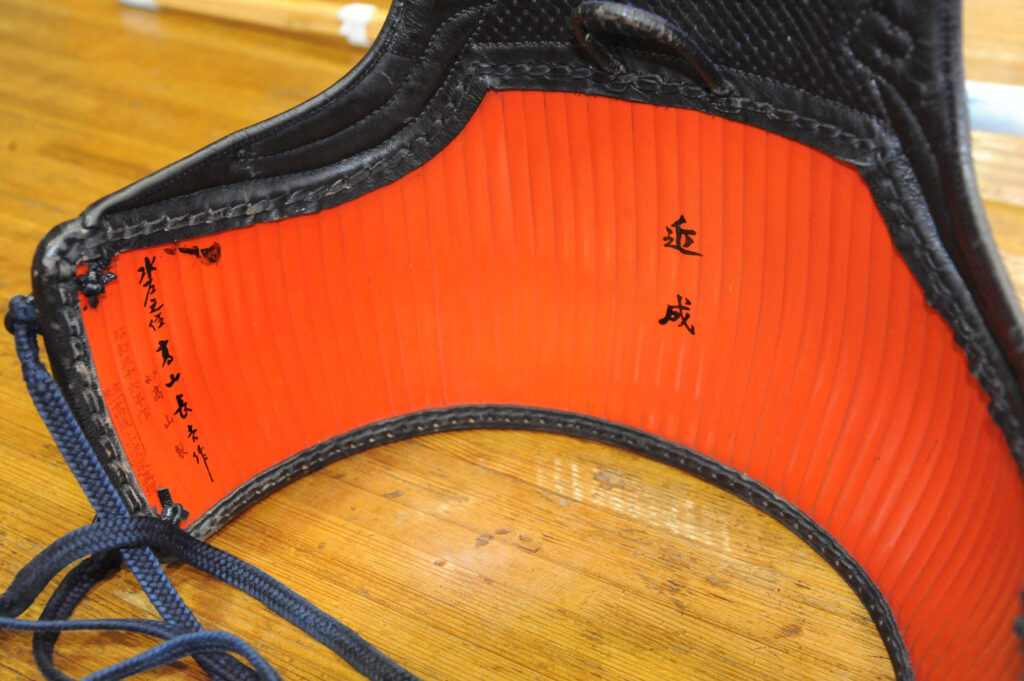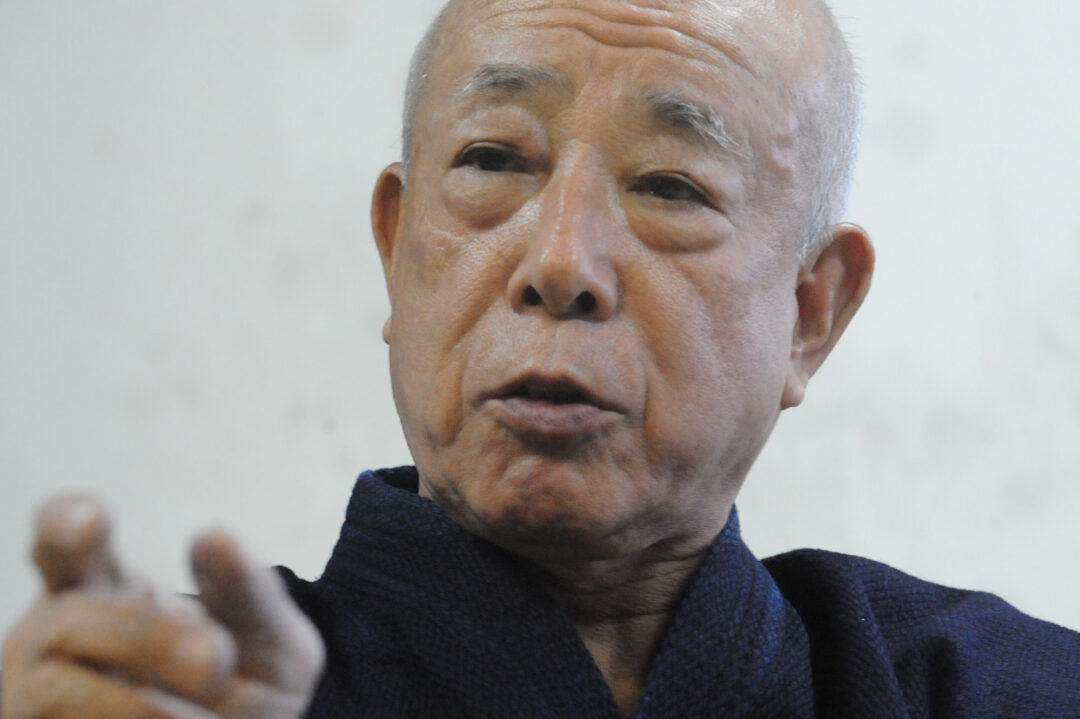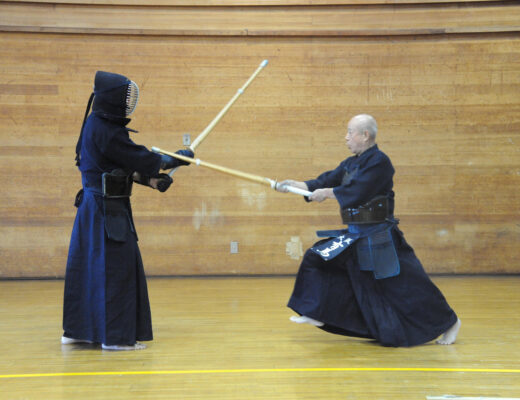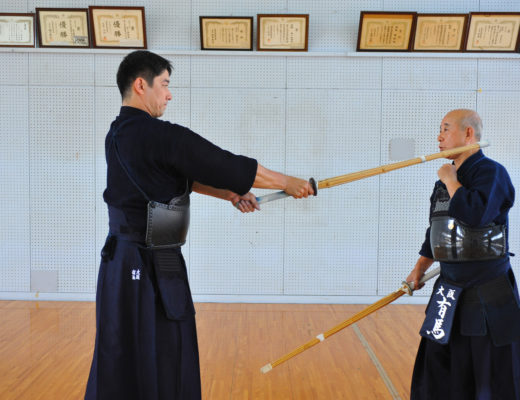In Kendo, the difference between victory and defeat often lies in how techniques land. It depends on factors such as your Kiai, Tenouchi and posture. If you know the essence of landing each technique, you will naturally be able to get Ippon. Arima Mitsuo is a two time winner of the Meiji-mura Kendo Tournament, which determines the top at the highest level of Kendo, 8th Dan and he will explain how to land your techniques.
Arima Mitsuo, 8th Dan Hanshi
Born in Okayama Prefecture in 1943. After graduating from Saidaiji High School, he joined the Osaka Prefectural Police, where he won second place in the All Japan Kendo Championship, and the title both individually and as a team in the National Police Kendo Championship. In 1993, he was promoted to 8th Dan, and later won the Meiji-mura Kendo Tournament twice, which determines the top of 8th Dan. He is currently an honorary instructor at the Osaka Prefectural Police, instructor of the Kendo Club at Hanazono University, instructor of the Kendo Club at Toll Express Japan and a part-time instructor at Osaka Seikouin Junior and Senior High School.
Good Tenouchi makes for sharp techniques, and the unification of voice and Kamae lands them
Although the word “landing” is very vague, I believe that there is such a thing in Kendo. For example, in the case of Kote techniques, there is a “landing” element in the strike. A Kote technique where unnecessary force is applied with the body and hands will result in a dull sound at the moment of the strike and considerable pain to the opponent. On the other hand, when a Kote technique is struck with the proper amount of force, not only is there a pleasant thudding sound, but the opponent is also left with a feeling of acknowledgement.
When you think about the Shinpan in Shiai, which strike will they raise their flags for? It is obvious that it will be the latter. In this case, “landing” is closely linked to Tenouchi. If you are looking to land techniques, it is inevitable that you will need to work on it.
Another thing that is inextricably linked to the word “landing” is posture. Both the posture during and after the strike are important. I will explain in detail later, but it is important to make sure that your posture is intact during the strike, and that you are in a position to move on to the next strike immediately afterwards. By keeping these things in mind, you will be able to raise flags on techniques that are close calls. This is what landing techniques is all about.
Since I first held a Shinai in the fourth grade of elementary school, I have been involved in serious competitions for a long time. In this article, I would like to talk about some of the things that I have practised so far in relation to landing techniques.
The story of my teacher, Chikanari Hiroshi
I would be remiss if I didn’t mention my teacher, Chikanari Hiroshi Sensei (8th Dan Hanshi). When I was in the fourth grade of elementary school, I started kendo at Saidaiji Butokuden in my hometown Okayama, and my instructor there was Chikanari Sensei. Since then, he trained me very hard for nine years until I was in my third year of senior high school. He had the air of an old Samurai, and he was very strict. However, being strict did not mean that he punished me physically or anything like that, but rather that he was very strict in his Keiko. And his training was full of compassion. I truly believe that the reason I am where I am today is because of the nine years that Chikanari Sensei taught me. I should not deviate from the topic of landing techniques, but Chikanari Sensei was extremely good at teaching, and his theoretical approach made it possible for me to do things that I could not do before immediately.
When I look back on the instruction I received from Chikanari sensei, I see that he emphasized the basics above all else, as all teachers did in the past. In particular, I remember practicing the footwork over and over again until I could no longer stand on my feet. I was not a tall person, and neither was my Sensei, so perhaps that’s why he felt the necessity of footwork so deeply. I turned 70 this year, and I am proud to say that my footwork is relatively good for my age. The only reason I have been able to maintain my footwork to this point is because of the guidance of my Sensei. I believe that good footwork also means that you are less likely to lose your posture. So, looking back, I think that Sensei naturally taught me the importance of landing techniques.
One more thing that I still keep in mind from my Sensei’s instruction is the depth of the down cut. When he taught us how to strike, he made it clear that the depth of the cut should be this deep for Men strikes and that deep for Kote strikes. The Shinai stops when it strikes the target area, but you must have the intent to cut deeper to create a brilliant strike. His strikes were so sharp that it felt like I was being cut, so I think he had the Tenouchi to land his techniques very well.

The rest of this article is only available for Kendo Jidai International subscribers!




